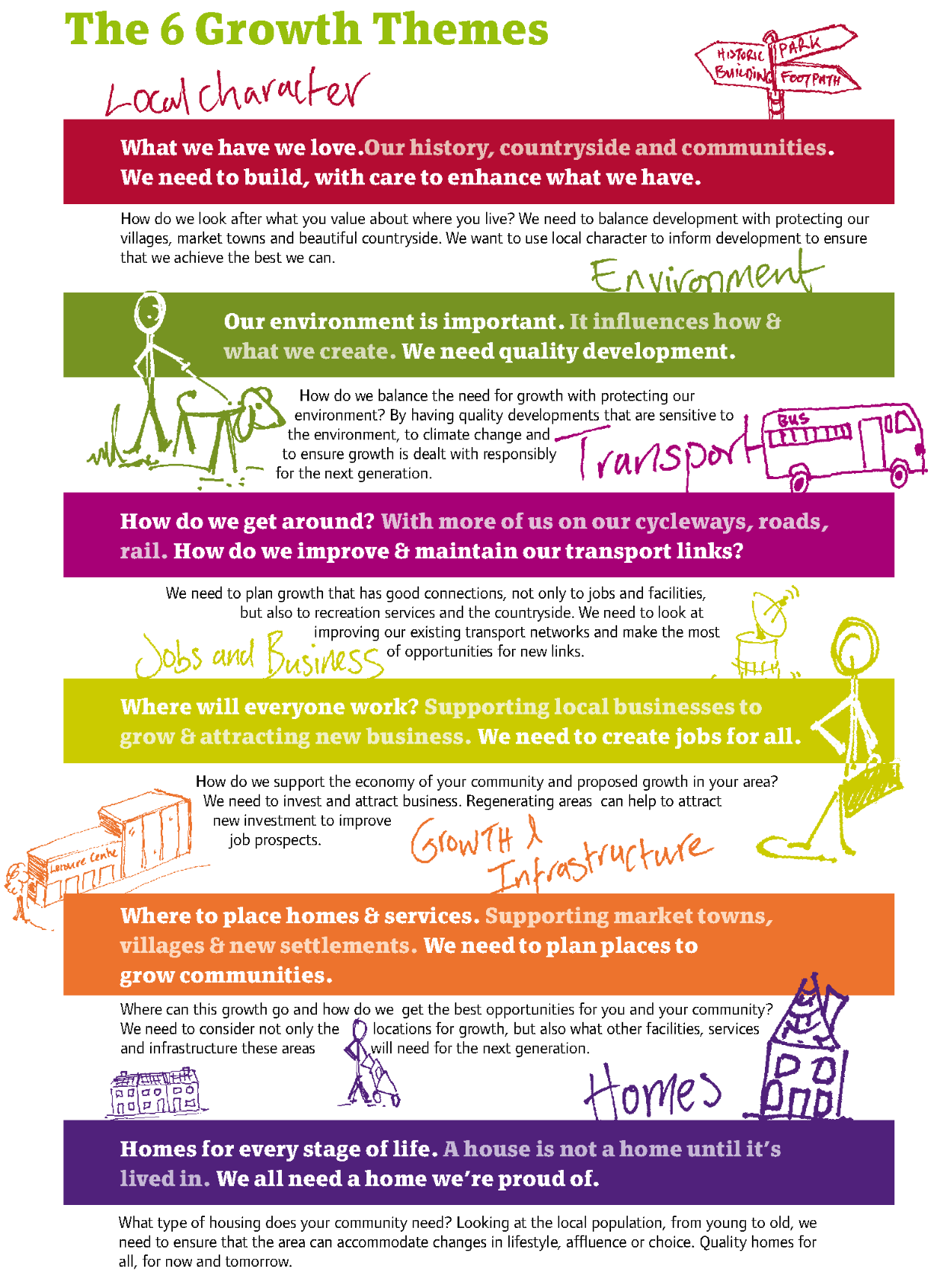Central Bedfordshire Pre-submission Local Plan (January 2018)
3 Consultation: Engagement
3.1 Council Priorities
3.1.1 The Plan is consistent with the priorities set out in the Council's Five Year Plan 2015.
3.1.2 This Five Year Plan highlights our vision and priorities and sets out the following six key priorities for the area.
- enhancing Central Bedfordshire
- great resident services
- improving education and skills
- protecting the vulnerable and improving wellbeing
- creating stronger communities
- a more efficient and responsive council
3.1.3 Whilst the plan aims to achieve all the priorities outlined above, the main priority that the Plan aligns to is Enhancing Central Bedfordshire.
This aims to improve Central Bedfordshire as a place to live, by enhancing prosperity with more and better jobs; to improve infrastructure, and to provide the quantity and type of housing needed by our residents while maintaining and enhancing the character of the area. Development will be facilitated by great infrastructure, such as super-fast broadband, Wi-Fi and transport. Our Market Towns and villages will thrive and prosper, with improved town centres and facilities[3].
3.1.4 It is considered that the 6 growth themes set out in the graphic (Figure 1) in this section are appropriate foundations for the Local Plan to contribute to achieving the vision and priorities of both the Plan and the Council as a whole.
3.2 Community Plans and Growth Themes
3.2.1 Community planning is a new approach, unique to Central Bedfordshire Council, which goes above and beyond the legal consultation requirements of the Local Plan which the Council undertook at regulation 18 from 4th July -29th August 2017. Our engagement vision is to have a proactive, ongoing dialogue with the local community about local needs and opportunities.
3.2.2 Additional growth which is going to be necessary in many parts of Central Bedfordshire brings with it pressures on infrastructure and services. Accordingly, building up a local picture of existing issues that people face is critical to understanding where new development can be accommodated and what measures need to be put in place to alleviate those pressures.
3.2.3 In order to capture this information at a local level (larger than parish, smaller than the whole of Central Bedfordshire)15 community areas have been mapped, based on a number of factors:
- Natural catchment or ward areas, connections and associations amongst communities e.g. for shopping, schools, work
- Access to services and facilities e.g. shops, post office, leisure services
- Town and rural hinterlands
- Shared characteristics, similar issues and opportunities
3.2.4 Grouping the areas like this has helped local residents to engage because they were able to see the direct relevance to where they live and help us consider all of the local issues and opportunities.
3.2.5 The first stage (November 2016 to March 2017) involved holding an event in each of the 15 Community Areas. Following these events, 15 Community Plans which collate all the information gathered at an event have been prepared and published as part of the evidence base for the Local Plan.
3.2.6 Using these as the foundation, the next stage of Community Planning will seek to engage directly with communities about the implementation of the allocations proposed for their area in this Plan. This may help to inform the spending of developer contributions as part of any future planning applications for the sites.
Figure 1: Six Key Themes





